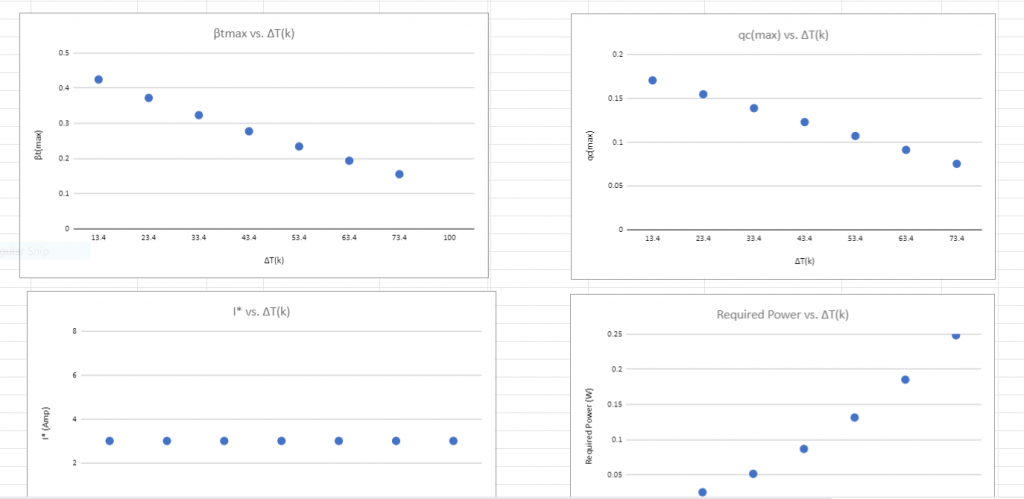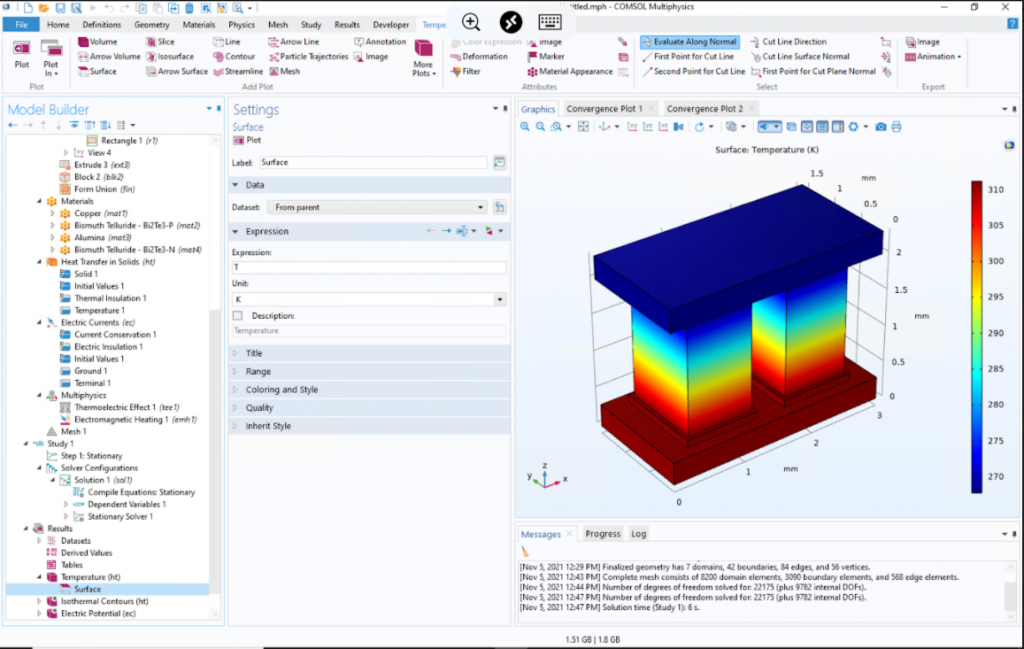To fulfill my entrepreneurship requirement, I took the courses: Project Design and Management l (MAE 434W) and Project Design and Management ll (MAE 435).
For MAE 434W, we first were introduced with options for which available project we could do. Although not my first pick, I was assigned to the group where members had to design and fabricate a Thermoelectric Cooler. The idea was to design and create a Thermoelectric Cooler that consumers can use to cool items through a portable setup. This form of refrigeration already exists. However, it is my group’s responsibility to design a new version, which incorporates greater efficiency through solar power. Throughout much of the first semester of my senior, when taking MAE 434W, my team and I would divide and work on understanding the design parameters, such as calculating the necessary power output/voltage and current needed for the electrical setup and the amount of heat transfer needed to convert 40 L of air in a contained space to 40 degrees Fahrenheit, assuming that the air is in the standard 90 degree Fahrenheit temperature for consumers. This was done using two technology platforms, Excel and COMSOL. With help from our advisor, Dr. Tamhane, who has knowledge of the matter and belongs to the Department of Mechanical Engineering, we were guided through the semester and completed our tasks. This gave us what we needed to produce a more reasonable design for the cooler and its parameters. Using excel and the provided initial data and equations, I have found a steady final data that showed the required power, current, cooling capacity and heat transfer for the cooler.

Of course, given the availability and cost for the selected devices, higher power of 80 W and a voltage of 12 V was the standard operating power needed. However, it should still satisfy the objective for the cooler. While I worked on these calculations, the COMSOL modeling and work was reserved for two other members of our group.

It was difficult during the semester having to manage much of the design parameters and having to keep the data consistent. However, we still maintained good communication between each other using Discord and Zoom and met each other each meeting. Our ability to communicate has allowed us to develop further as a team and get the data we needed. Having this good communication also helped to manage scheduling and coordinating the completion of subtasks. Along with having to calculate the data for the heat transfer in the cooler, we also learned about important topics relevant to project planning. This included Gantt Charts, Priority Matrices, Risk Analysis, and Product Reliability. Additionally, we had to write out a report outlining our data and analysis of the Peltier effect for cooling. Much research also had to be done to thoroughly explain the concept.
This semester, my group and I continued with our project in MAE 435, preparing for the Research Symposium, moving on to the physical design and fabrication phase. Having understood the principles of extracting heat and cooling from MAE 434W, my team and I worked together to find out the necessary components needed and draw out a basic design for the cooler that would use insulation for heat transfer and give enough room for the circuitry and 40L of concealed air to be cooled. This was portion of the project was outlined and completed using Inventor. We had to work together and use outside help in the form of professors, vendors, and on-campus resources for the needed materials to setup our prototype. As we work to finish a functioning prototype, a final report will also be added which would outline the data and work behind the two-semester project, along with a poster for presenting the information on our project for the symposium and a website for people to view online.

Overall, this course was a great experience for me. It has given me the opportunity to aid in designing an actual prototype and has made me feel more prepared when building it. Having learned much of the design process prior to this course, this course has allowed me to learn the stages of understanding the problem or objective and know what sort of information to seek in order to find viable solutions and design parameters to consider. It was also a privilege having to work with colleagues who share the same level of understanding in engineering, which have proven to be useful. With their competence and reliable communication, much progress was made to generate a methodical approach for the project. As an aspiring engineer, this two-semester project has given me the experience I needed to pursue my career. It has also benefitted me in knowing what it is like to design and display something which would benefit society.